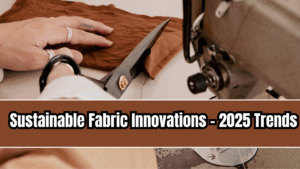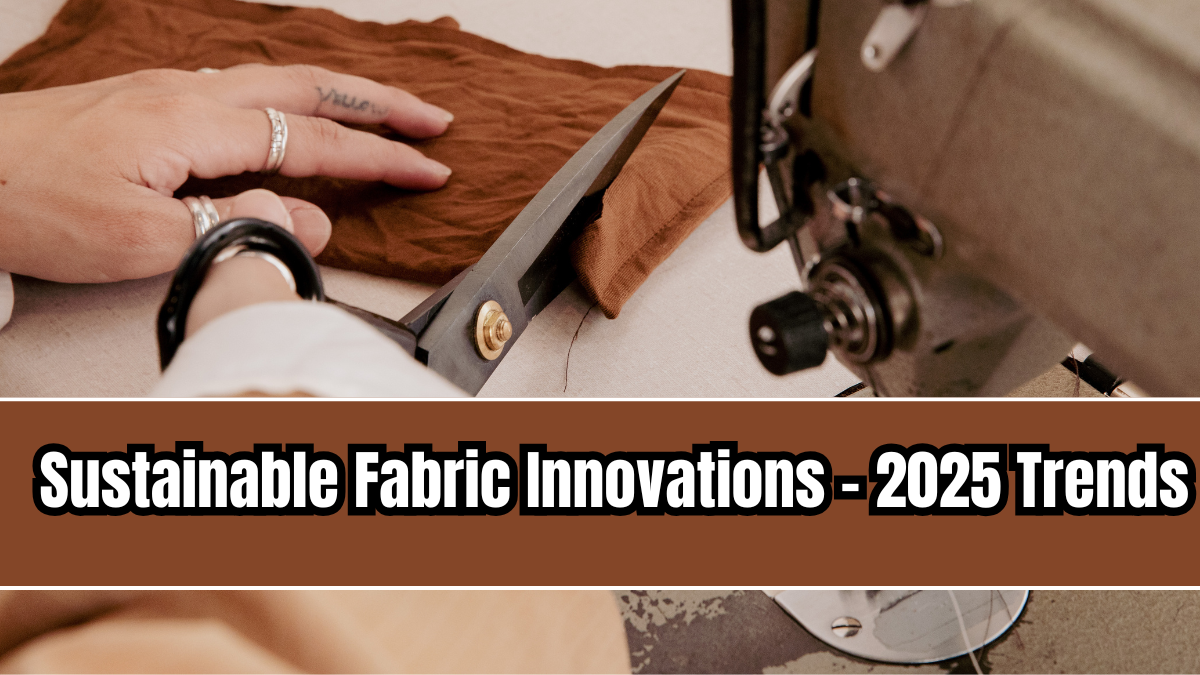The global textile industry is undergoing a major transformation in 2025, with Fabric Innovation Trends 2025 focusing on sustainability, eco-friendly production, and technological advancements. Consumers today are more conscious of what they wear and where it comes from. This shift is pushing brands and manufacturers to invest in sustainable textiles, smart fabrics, and innovative materials that combine comfort, durability, and responsibility toward the environment.

Why Sustainable Fabrics Are the Future
The fashion industry is one of the largest polluters in the world. Traditional fabric production consumes massive amounts of water, energy, and chemicals, leading to severe environmental damage. The rise of sustainable textiles in 2025 addresses these challenges by:
-
Reducing water and energy use.
-
Minimizing chemical pollution.
-
Encouraging recycling and circular fashion.
-
Offering biodegradable alternatives to synthetic fibers.
-
Meeting global regulations on sustainability and climate goals.
For brands, adopting sustainable fabrics is no longer optional—it is essential to remain competitive in global markets.
Key Fabric Innovations in 2025
The fabric innovation trends in 2025 are reshaping the way clothing and textiles are made. Some of the leading developments include:
-
Organic Cotton: Grown without harmful pesticides, making it safer for farmers and the environment.
-
Recycled Polyester: Created from PET bottles and textile waste, reducing landfill pollution.
-
Hemp and Bamboo Fabrics: Naturally sustainable, durable, and requiring less water than cotton.
-
Bio-Fabricated Leather: Lab-grown leather alternatives that avoid animal cruelty while maintaining durability.
-
Plant-Based Fibers: Materials made from pineapple leaves, banana stems, and algae.
-
Smart Fabrics: Integrated with sensors and technology for fitness tracking and temperature control.
-
Waterless Dyeing Technologies: Innovative methods that reduce water consumption in textile coloring.
These innovations are revolutionizing not only fashion but also healthcare, sportswear, and home textiles.
Global Adoption of Sustainable Textiles
In 2025, global demand for eco-friendly fabrics is surging. European markets are leading the way with strict sustainability requirements for apparel imports. The United States is witnessing growing consumer preference for recycled and organic fabrics. In Asia, including India and China, textile manufacturers are scaling up eco-friendly production to meet international demand.
Luxury brands are also embracing sustainable fabrics as part of their core identity. From recycled nylon in handbags to algae-based sneakers, sustainability is no longer a niche concept but a mainstream business strategy.
Role of Indian Textile Industry in 2025
India, one of the world’s largest textile producers, is at the forefront of fabric innovation trends. Manufacturers are adopting organic cotton farming, setting up recycling plants, and experimenting with natural fibers like jute and banana. Indian designers are also blending traditional weaving techniques with modern eco-friendly fabrics to create unique collections for global markets.
Government support through initiatives like the Production-Linked Incentive (PLI) scheme and textile parks is encouraging innovation in sustainable fabric production. This is giving Indian exporters an edge in global markets where demand for eco-conscious products is rapidly increasing.
Benefits of Sustainable Fabric Innovations
The rise of sustainable textiles provides several benefits to industries and consumers.
-
Environmental Benefits: Lower carbon footprint and reduced water and energy consumption.
-
Economic Benefits: New business opportunities in recycling, bio-fabrics, and green technologies.
-
Consumer Benefits: Safer fabrics that are non-toxic and skin-friendly.
-
Brand Value: Companies using eco-friendly fabrics gain stronger reputations and consumer loyalty.
This win-win situation ensures that sustainability is not just a responsibility but also a profitable strategy.
Challenges in Adoption
Despite the progress, there are challenges to widespread adoption of sustainable fabrics in 2025. Production costs for organic and bio-based fabrics remain higher than conventional textiles. Infrastructure for large-scale textile recycling is still developing. Many small and medium enterprises struggle to afford the technology required for eco-friendly innovations. Additionally, educating consumers about the importance of sustainable fabrics remains an ongoing task.
Future Outlook
The Fabric Innovation Trends 2025 point toward an exciting future. Over the next decade, technologies like 3D-printed textiles, self-healing fabrics, and fully biodegradable synthetic alternatives are expected to grow. Global collaborations between governments, textile manufacturers, and fashion brands will drive further innovation. For consumers, this means greater access to stylish, durable, and environmentally responsible clothing.
Final Thoughts
The Sustainable Fabric Innovations – 2025 Trends highlight how the textile industry is adapting to new environmental realities and consumer expectations. By embracing organic materials, recycled fibers, and cutting-edge technologies, fabric manufacturers are leading the way to a greener, smarter future. As sustainability becomes the heart of textile production, fabrics of tomorrow will not only dress us well but also protect our planet.
FAQs
What are the top fabric innovations in 2025?
Organic cotton, recycled polyester, hemp, bamboo fabrics, and bio-fabricated leather are among the top innovations.
Why are sustainable fabrics important?
They reduce pollution, conserve resources, and offer eco-friendly alternatives to traditional textiles.
Are smart fabrics part of fabric innovation trends?
Yes, smart fabrics with sensors for health monitoring and temperature control are growing in popularity.
How is India contributing to fabric innovations?
India is investing in organic farming, textile recycling, and plant-based fibers while exporting sustainable fabrics globally.
What challenges exist in adopting sustainable textiles?
High production costs, limited recycling infrastructure, and lack of consumer awareness remain major challenges.
Click here to know more.
